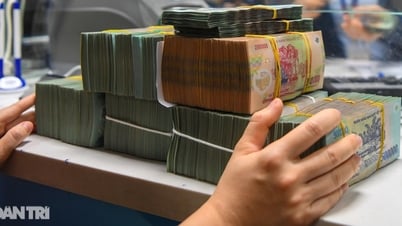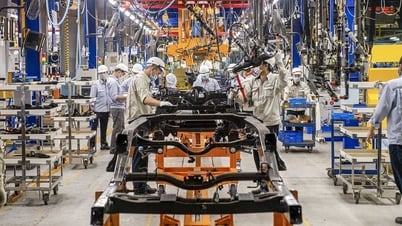 |
| Mr. Nguyen Kim Hung, Vice President of Vietnam Association of Small and Medium Enterprises (Photo: Hoang Giap) |
Can you share why we need to consider recognizing digital assets and carbon credits as collateral?
Mr. Nguyen Kim Hung : Vietnam cannot stand outside the law of technological development and the trend of global economic integration, in which digital assets and carbon credits are becoming important factors.
Digital assets should not be understood in a complicated way. Anything that can be digitized, such as data, property rights, or other forms of digital assets, can be considered digital assets. However, to recognize and use them as collateral, we need to clarify two main issues. The first is the legal regime, that is, whether digital assets should be recognized or not. The second is the technical solution to digitize and manage these assets.
Regarding the question of whether digital assets should be recognized, this depends on many factors, the most important of which is market demand. Whether the market really needs to digitize assets or not will determine their recognition. For example, Bitcoin has been circulating for decades in the world , but in Vietnam there is still no legal framework for recognition. This shows that not all digital assets need immediate legalization. We need to prioritize digital asset categories that are urgent and suitable for practice. Currently, the Government has been drafting laws and decrees to soon issue regulations on digital assets, and I think this is the right time to start.
In terms of technical solutions, there are many approaches to digital asset management in the world today, but no country has established a common standard. Even in the US or Europe, each country applies its own solution, leading to the fact that a digital asset recognized in one country may not be accepted in another due to the lack of unified standards. Therefore, for digital assets to truly become collateral in the banking credit system, two factors need to be simultaneously addressed: a clear legal framework and a synchronous technical solution. When both of these factors are ensured, the digital asset market will be large and transparent enough to be applied to credit transactions.
Regarding carbon credits, how do you assess its potential when recognized as a collateral asset, and what opportunities does this bring to businesses in their green transformation journey?
Mr. Nguyen Kim Hung: Carbon credits are now almost an inevitable requirement for businesses, especially in the context of countries becoming increasingly strict about green production and green economy.
According to statistics discussed at forums, Vietnam has issued more than 10 million carbon credits, worth between 300 and 500 million USD. If carbon credits are recognized as collateral, this will create great opportunities for businesses pursuing a green transition strategy.
President Donald Trump’s recent tariff hikes show that countries need to exploit the gaps in trade negotiations, and carbon credits are a tool to help businesses meet green production requirements. Europe and the US both require green traceability for imported products, and carbon credits are a tangible proof of this process. Therefore, carbon credits are not only important now, but will increasingly become a competitive advantage for countries and businesses in the future.
However, the problem lies not only in the value of carbon credits but also in their life cycle and scope of application. For example, in the energy industry, to trace a kWh of green electricity production, it is necessary to control the entire supply chain from raw material import, transportation, processing, to production. This process is very complicated and requires a system of assessment, origin control, and authentication of the real value of carbon credits. Only when these requirements are met, carbon credits become valuable collateral assets, enough to be accepted by banks or financial institutions.
Currently, banks are still confused when considering carbon credits as collateral. If they accept, they will have difficulty in handling bad debts, because intangible assets such as carbon credits are not as easy to value or liquidate as tangible assets. Handling bad debts related to real estate is already very complicated, let alone intangible assets. However, if the entire value chain of carbon credits, for example for green electricity, can be traced, its liquidity in the global market will be very large. International banks, financial institutions, and even individuals investing in green assets all have high demand for this type of asset. Therefore, handling carbon credits should not be limited to the national scope but should be expanded to a global scale, taking advantage of the investment trend in the green economy.
In your opinion, what mechanism is needed for banks to accept intangible assets such as carbon credits as collateral?
Mr. Nguyen Kim Hung: For banks to accept intangible assets such as carbon credits, there needs to be a clear legal framework and effective control solutions. Instead of using administrative measures, the State should issue an institution that clearly defines digital assets and carbon credits, including how to manage, control, and manage risks. The decision to accept these assets or not should be left to banks to assess based on their business strategies. Risks are inevitable, but if banks can assess the value and accept the risks, they will participate.
When it comes to valuation, each bank has its own approach, similar to real estate valuation. For example, a piece of land can be valued above market value if it brings strategic value to the buyer. With digital assets, the value is highly volatile and can change during the day, so imposing a general valuation formula is not feasible. The government only needs to provide basic definitions, management regulations, and let the market decide the value. Banks need to invest in technology and control processes to be at the forefront of this field, as Switzerland and Singapore have successfully done.
Sir, can recognizing digital assets as collateral promote innovation, especially when the Government plans to provide VND500,000 billion for startups?
Mr. Nguyen Kim Hung: Recognizing digital assets as collateral certainly creates opportunities for innovation, but it needs to be viewed from multiple perspectives. Startups often lack tangible assets and find it difficult to demonstrate cash flow or stable financial statements, especially in the early stages when it takes 3-5 years to generate revenue. Banks, with their strategy of focusing on short-term loans and payment services, are not suitable for funding startups. Instead, other financial institutions, such as venture capital funds, need to participate.
To support startups, the government should build a separate exchange that allows businesses to issue convertible bonds into shares under strict control. This would encourage individuals and organizations to invest in startups, taking advantage of the Vietnamese people’s bold spirit in owning new assets. The Ministry of Finance is moving towards this solution, but clearer regulations are needed to increase feasibility.
Recognizing carbon credits as collateral will boost green finance markets Recognizing carbon credits as collateral is the right move in the context of global economic integration, when countries are increasingly demanding on green production. Carbon credits are a tool to authenticate green production, helping businesses meet international standards and enhance their competitive advantage. When supported by legal institutions and control and assessment tools, carbon credits become valuable collateral, attracting the participation of banks and financial institutions. The economic benefits for businesses are clear. Carbon credits not only help access capital at preferential interest rates, but also open up opportunities to invest in future assets. For example, a manufacturing plant is not only valued for its fixed assets but also for the amount of carbon credits it generates, such as how many hectares of forest it plants or how much it reduces emissions. This increases the value of the asset and attracts investment from the green financial market, promoting the sustainable development of the business. Mr. Nguyen Kim Hung |
Source: https://thoibaonganhang.vn/chia-khoa-thuc-day-tai-chinh-xanh-va-doi-moi-sang-tao-163474.html






![[Photo] National Assembly Chairman Tran Thanh Man meets with Thai Prime Minister Paetongtarn Shinawatra](https://vphoto.vietnam.vn/thumb/1200x675/vietnam/resource/IMAGE/2025/5/15/e71160b1572a457395f2816d84a18b45)
![[Photo] Prime Ministers of Vietnam and Thailand visit the Exhibition of traditional handicraft products](https://vphoto.vietnam.vn/thumb/1200x675/vietnam/resource/IMAGE/2025/5/15/6cfcd1c23b3e4a238b7fcf93c91a65dd)























































































Comment (0)